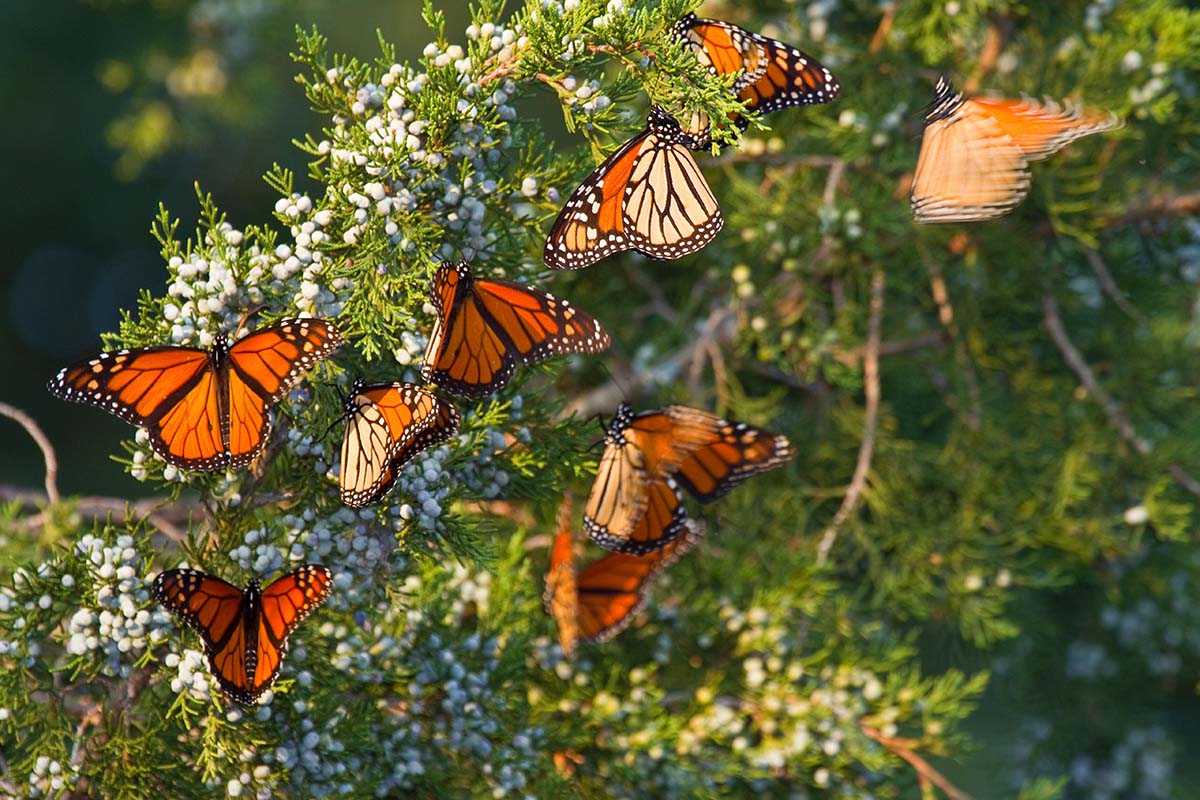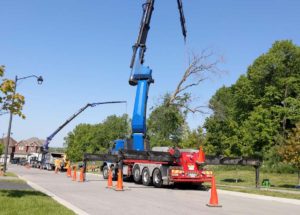Pollinators are essential for every flowering plant, whether flowers, bushes, or trees. They’re also sensitive species that require special care. Pollinators are most active in Ontario during the Spring and Summer. During the sunny season, we can help promote pollination and grow their populations by following certain pollinator-friendly tree care practices. Our expert arborists explain who Ontario’s pollinators are, why they’re important, and some tree care key practices to help pollinators and the plants they support thrive.
Who are Ontario’s Pollinators?
Ontario has a wide array of pollinators. In fact, there are over 700 native species that aid plants in pollination including over 420 species of bees. We don’t need to list each one here, but they include bees, moths, butterflies, beetles, flies, wasps, and hummingbirds. While elsewhere bats are typically pollinators, there are no fruit- or nectar-eating bat species native to Ontario. Bats do, however, play an important role in pest control and reducing certain insect populations that are harmful to these pollinators.
Why are Ontario’s Pollinators Important?
All of these pollinators are essential to Ontario plant life. Many plants that provide shelter and food to animals rely on pollination. Pollinators also play an essential role in the province’s agriculture and your own garden. All flowering crops need pollination for successful harvests, including tree fruits, berries, various melons, cucumbers, squash, and various other field crops. While the wind can provide some pollination, pollinators are much more effective and ensure successful pollination. Plus, each of these species needs to be maintained since different plants have unique pollinators. For example, the usually loathsome wasp is essential to fig pollination. Keeping pollinator populations thriving with friendly tree care is essential for the province’s ecosystems, economic activity, and the beauty of your own yard and gardens.
Pollinator-Friendly Tree Care Practices
Helping ensure the success of these species falls on how we manage our yards and gardens. Trees are especially important for these pollinators since they provide both food and shelter. Here are some essential practices of pollinator-friendly tree care from the certified arborists at Advanced Tree Care.
Provide Nesting Spaces and Materials:
Trees are already natural shelter spaces for most pollinators. They are typically where insects build their nests, and they provide perfect perching spots for hummingbirds. One pollinator-friendly practice is to provide some foraging material to build nests in your trees. While a clean lawn might be ideal, leaving some leaves and grass cuttings will also provide these species with the necessary building material for a nest. You can also attract bees by providing a house for them. While many think of honeybees that live in collective hives, the mason bee is one of the most efficient pollinators. These bees are solitary and live in individual rooms of a “bee hotel”. Whichever species you prefer, you can install specialized bee houses at least 6 or 7 feet up in your tree to attract these incredible pollinators.
Plant Trees That Flower in the Summer:
Pollinators rely on plants that flower throughout the spring, summer, and fall. Thus, an important pollinator-friendly tree care practice is to have a tree that flowers in the summer. Numerous apple and cherry trees flower this time of year as well as certain dogwood and the beautiful tulip tree. If you want to ensure pollinator success in other seasons, plant other trees that flower at those times.
Pruning Increases Tree Bloom:
Pollinators need flowers to feed off nectar. The more flowers, the more they can eat and the more their populations thrive. Having arborists professionally prune your trees is an extremely pollinator-friendly tree care practice because it increases your tree’s health and the amount it blooms. Pruning causes branches and stems to split into additional smaller branches. The increased number of branches and stems means the tree can bloom more richly with more flowers. Pruning in the spring or early summer will help ensure your trees can provide pollinators with far more blooms.
Pollinator-Friendly Pest Removal:
Removing pests is an essential tree care practice. However, certain pesticides can also harm these important pollinators. Certain pesticides have been a key factor in the endangerment of various bee species. At Advanced Tree Care, our certified arborists are dedicated to being environmentally responsible in our pest control services. We begin with non-chemical controls, and only move on to pesticides in extreme cases where the tree cannot naturally recover. We only use pesticides on a tree after its pollination period has ended, so no pollinating insects will be feeding on the tree. Plus, our arborists only apply pesticides to the affected tree and the areas attacked by the hostile pest, preventing damage to any other species inhabiting the tree.
Make a shallow bath:
This isn’t specifically a tree care tip, but no less helpful for pollinators. Hummingbirds need bird baths to wash off, so a shallow washing area is more likely to attract them and have them stay in the area. That may seem obvious, but you may not have realized that bees also use these baths as a water source. Add some large rocks that won’t submerge under the water. Bees will be able to use these to quench their thirst.
Pollinators Are Our Pals
These few pollinator tree-care practices will help ensure your trees are healthy and your local pollinators are happy and thriving. By helping these pollinators, they return the favor and help your trees. If you’re curious about other, more specific tree care that can help pollinators, be sure to contact our ISA certified arborists at Advanced Tree Care. After all, pollinators almost love trees as much as we do.






